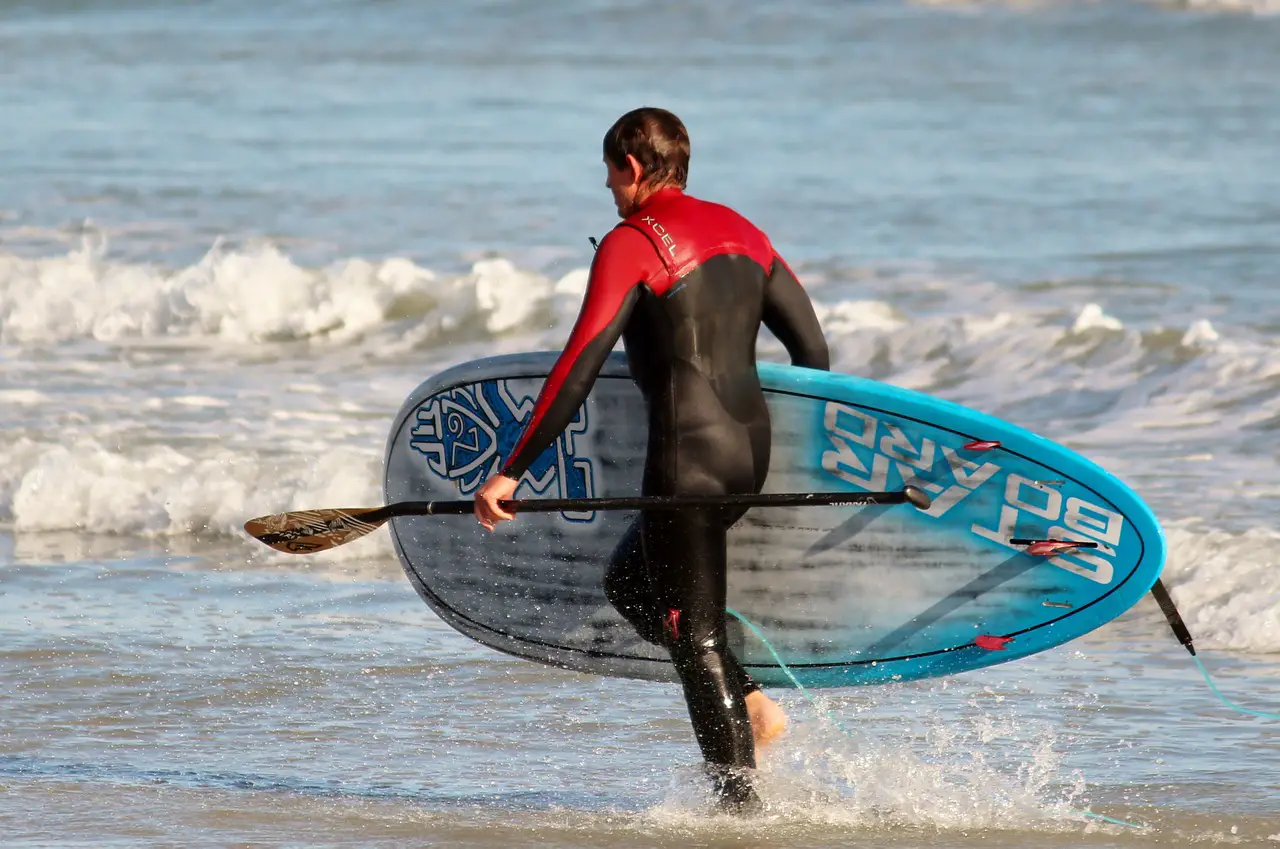In order to be safe and well prepared on the water on every SUP tour, you should always dress properly when engaging in stand up paddling.
The following article discusses the most important garments and accessories that you should have with you on every trip.
So if you want to know how to dress properly for SUP throughout the year, you can find everything by just reading this article.
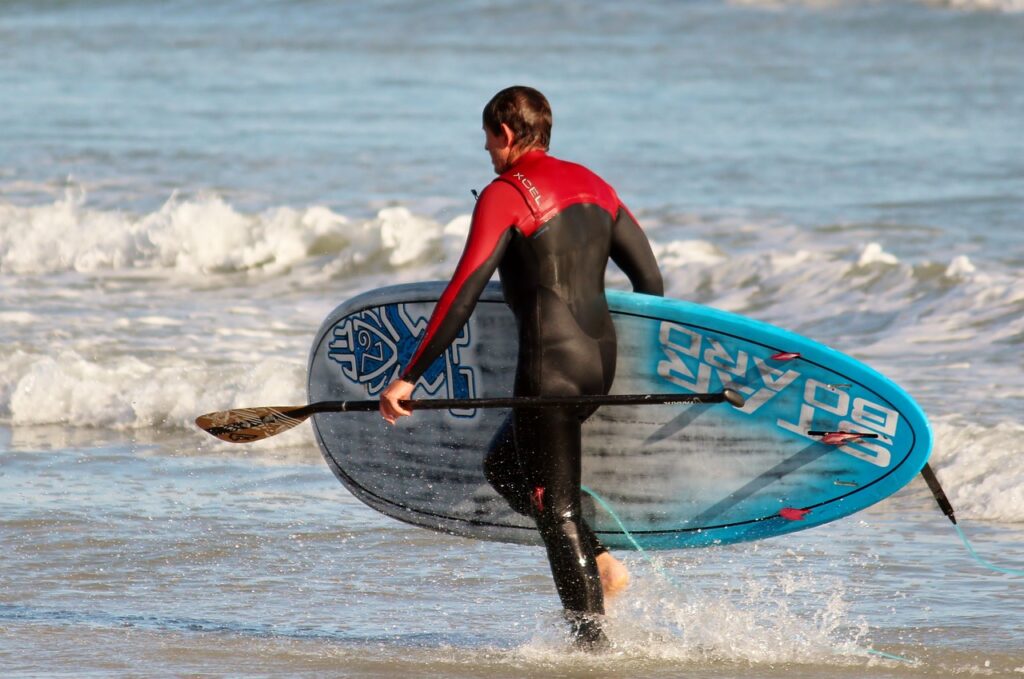
Paddle Board Clothing: The importance of the water temperature
The “right” Stand Up Paddle Clothing is primarily depending on how warm the water and the air are.
It is essential to be aware that even if the weather is warm, the water temperature can be very cold. This applies especially in spring and autumn or if you are travelling on a river or mountain lake. In that case, you should always be well prepared so as not to suffer a cold shock if you accidentally fall into the water.
On the other hand, of course, sun and heat also play a role, especially in summer. Additional equipment is required for more special types of stand-up paddling, such as whitewater SUP.
Basically, the following areas should always be protected in SUP:
- the head
- the legs
- the eyes
- the legs
- the feet
Which clothes for SUP?
Body: Stand Up Paddling Clothing for All Seasons
Summer: What you should consider
Since you are constantly moving when standing up and paddling, your body usually does not get cold while you are standing.
In summer, when both the air and the water are warm, normal swimwear is sufficient Paddle Board clothing.

This means that swimming trunks or bathing suits are perfectly proper.
If you do longer tours, however, you should protect yourself against sunburn or even sunstroke (how long is “long” depends on your skin type).
In addition to the necessary sunscreen, which, of course, should be as waterproof as possible, we recommend the so-called UV or Lycra shirts (“Rash Guard“).
Rash Guards are comfortable to wear, dry quickly, and offer even better protection from the sun than any sunscreen.
Due to their material and the fact that they are very close-fitting, they not only protect against the sun more effectively than everyday T-shirts, but they are also more comfortable to swim in and dry much faster.
Rash Guards are now available with long sleeves as well as short sleeves and are in cool styles and designs for men, women, boys, and girls. A complete overview of what to consider and which Rash Guards are the best is available on coolwatersports.com, too!
Spring, Autumn and Winter: What You Should Consider
The situation changes in low water or air temperatures. Here, it is important to remember that water (especially in combination with a draft) dissipates body heat substantially more than air alone. This means:
Cooler water temperatures make thermal insulation necessary.
For humans, this is about 20°C (68°F) in water temperature, but of course, it also varies from person to person.
But remember before you go out on the water: If you are not really feeling hot on the beach, you should think about additional cold protection.
You have the following options for cold protection:
- Arm and leg warmers from cycling (but only to a certain extent)
- Neoprene or wetsuit
- Dry suit
Wetsuit or dry suit: Which variant is better for stand up paddling?
This question has been discussed often, and there is no clear answer. Again, it depends on environmental conditions on the one hand and your personal preferences on the other.
But let’s start at the beginning:
What is a wetsuit?
A wetsuit is made of a thin layer of neoprene, and, as the name suggests, the wetsuit does not keep you completely dry.
It achieves a warming effect by holding a thin layer of water against the body. Your body keeps the water at a higher temperature, providing insulation.
In order to keep the water layer thin and to allow the lowest possible water exchange, wetsuits must fit very closely to the body. Therefore, you usually wear nothing under the wetsuit apart from a swimsuit and possibly a lycra shirt.
This brings us to the advantages of neoprene: Wetsuits are ideal for sports involving a lot of movement and in situations where you sometimes have to swim. Additionally, they are slightly cheaper than dry suits.
Bonus – Tip:
Wetsuits are also available for different situations. For example, there are suits with short sleeves and legs or only short sleeves. In addition, neoprene has different thicknesses.
The rule is: the thicker the neoprene layer, the warmer it will keep you.
What is a dry suit?
Dry suits are made of robust and water-repellent nylon and are, therefore, more or less waterproof. Additionally, water is also prevented from entering through the suit’s cuffs, which waterproof the openings (e.g. on the neck, wrists, and feet).
Therefore, as the name suggests here, a dry suit keeps you more or less completely dry.
Unlike a wetsuit, a dry suit does not insulate by using a thin layer of water but rather with a layer of air. Since air conducts heat, as already mentioned above, less effectively than water, a dry suit keeps you even warmer than a neoprene suit.
But here’s what you need to know:
- A dry suit is less suitable for swimming and should get wet as little as possible for ideal insulation
- Since a dry suit does not fit as snugly, it restricts your freedom of movement more than a comparable neoprene.
Of course, the dry suit also has its advantages:
- You can wear different clothes underneath (e.g., ski underwear or the like), which will also keep you warm.
- Even out of the water, a dry suit keeps you much warmer.
Comparison between Wetsuits and Dry Suits
| Wetsuit | Drysuit | |
|---|---|---|
| Insulates by | Water Layer | Air Layer |
| Cold Protection | Good | Very good (esp. with additional clothing |
| Freedom of Action | Good | Restricting |
| Price | about 150 – 300 $ | about 400 – 650$ |
| Lifetime | approx. 5 years | approx 10 – 15 years (when cuffs and zippers are replaced) |
Our conclusion on wetsuits and dry suits as Paddle Board Clothing:
If you are not looking for extreme situations with stand up paddling (e.g., whitewater SUP in mountain streams or touring in December), then we believe the wetsuit has advantages for stand up paddling due to more freedom of movement and also easier use.
In addition, it is a better choice, especially for beginners, as it is also a bit cheaper.
Head: sun protection hat and, in certain situations, even a helmet
A sun protection hat protects you from sunstroke and should have removable neck protection in midsummer. In addition, a model with UV protection between 35-50 should be chosen. Most sun protection hats are made of polyester.
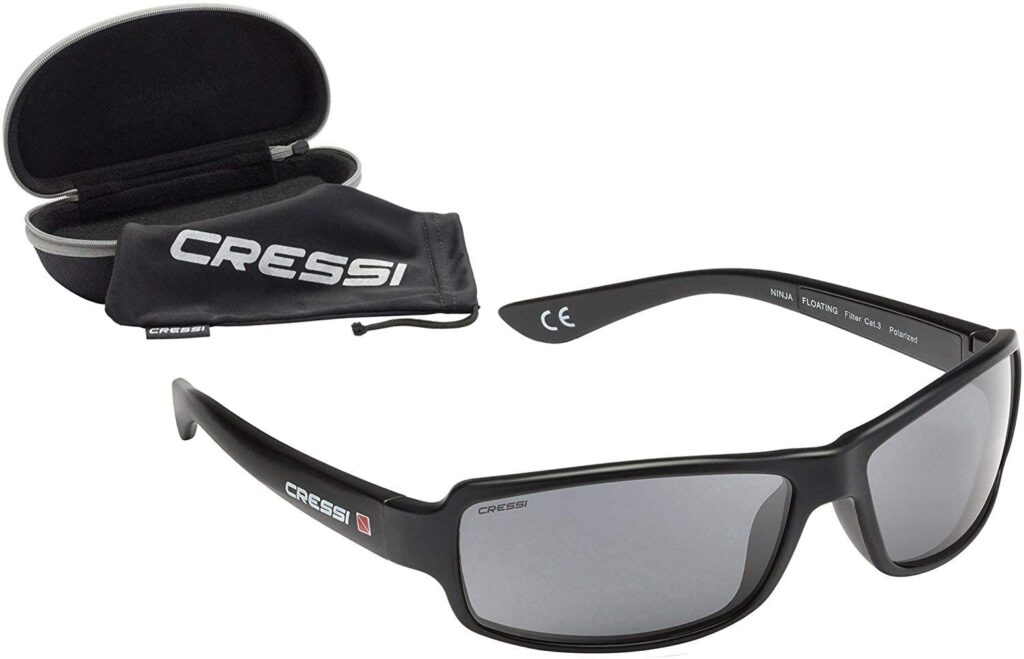
You should also wear sunglasses, either with a glasses strap or special ‘unsinkable’ glasses, to protect your eyes.
In particular, “floating” sunglasses, such as the Cressi Ninja shown here, are specially developed for all kinds of water sports.
This means that they will not sink to the bottom, even if they fall into the water. In addition, these glasses are made of extra water-repellent polycarbonate, which prevents annoying drops and water stains on your glasses even when you have gone for a swim.
River or whitewater SUP is a particular situation
The dangers of falling in the river are much more significant, especially on whitewater tours, than on a leisurely tour in shallow water. Hitting a stone that is close to the surface of the water is a real danger.
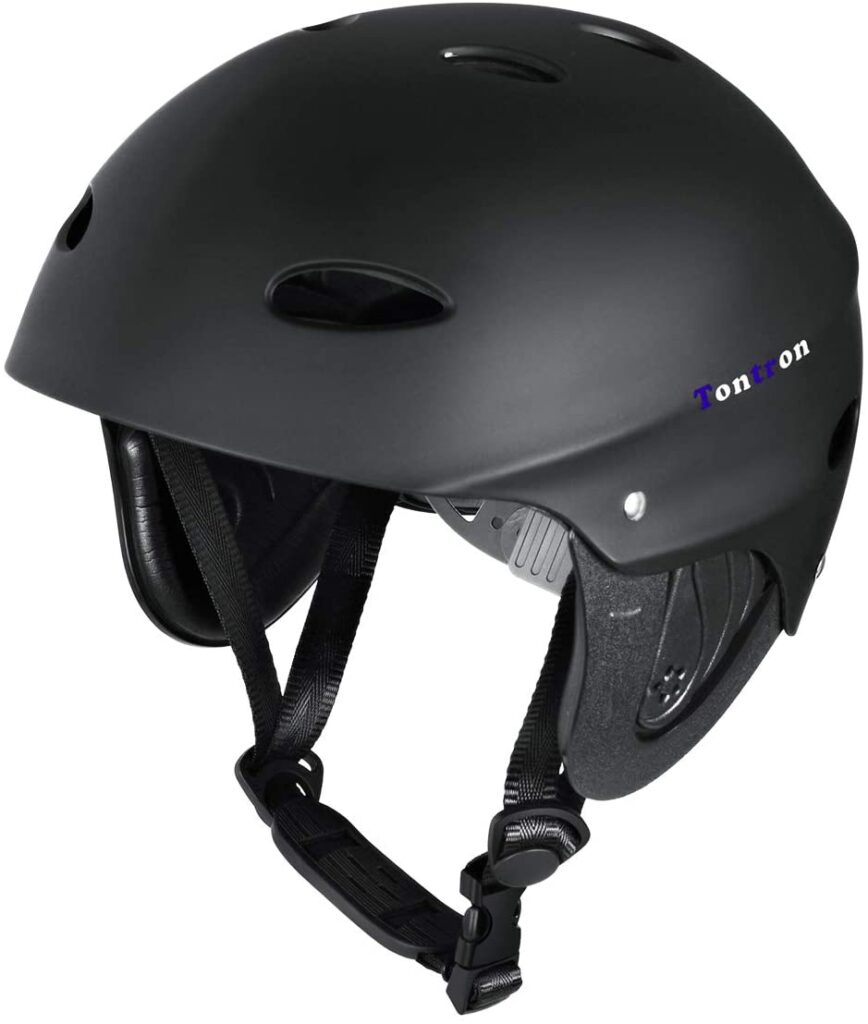
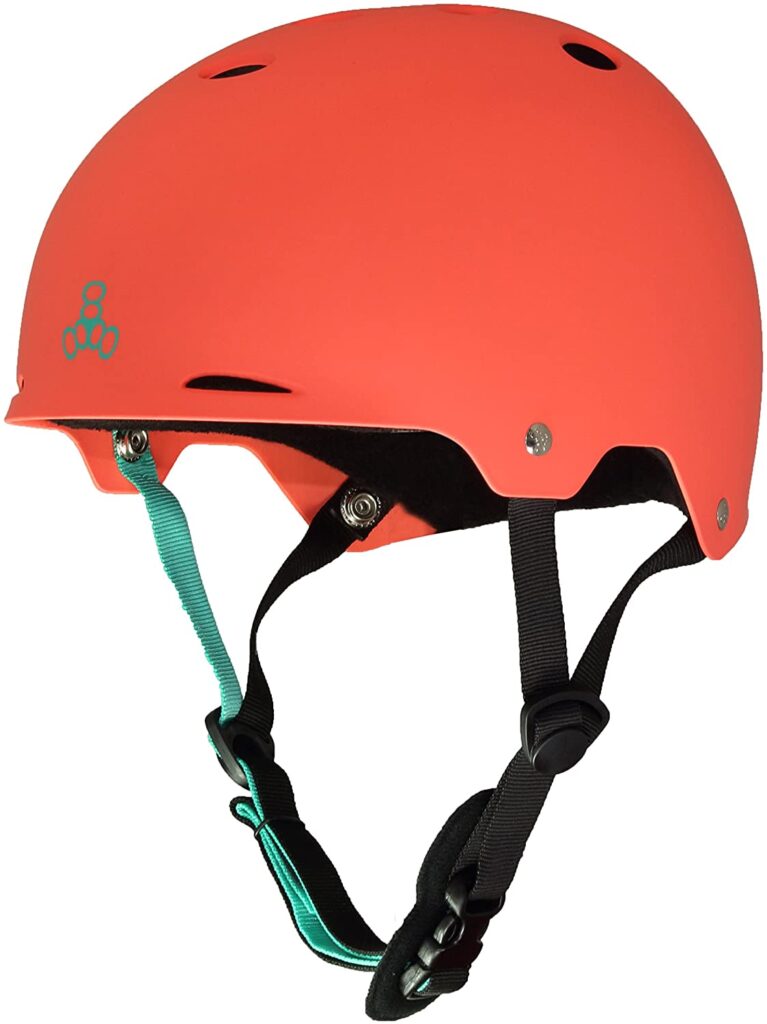
P.S. this is also important to keep in mind with the Wave SUP, depending on the area where you surf. So if you don’t know the area well yet, be fully informed before you hit the waves.
In this situation, therefore, all possible security measures should be observed.
Consequently, from our point of view, a special SUP helmet is necessary on every river and especially on whitewater tours! Very good examples of Helmets for Stand Up Paddling are the Triple Eight Gotham or the Tontron Whitewater.
Ideally, the Helmet consists of three layers and protects you from hitting your head, a rock or other hard objects if you fall into the water. There are many different versions in numerous styles, so you should certainly be able to find the suitable model to protect you most effectively, which is still fashionable in every body of water.
Feet: Beware of cold water or sharp objects
A frequently asked question is: Do you have to wear shoes when you go to the water?
Most SUP boards have a non-slip and padded surface, so you can usually do without shoes or the like without any problems. From a health point of view, it is even better to do Paddle Boarding without shoes.
The reason:
Stand up paddle boarding requires the muscles in your feet to help you to balance on the board, so those muscles get a workout as you balance.
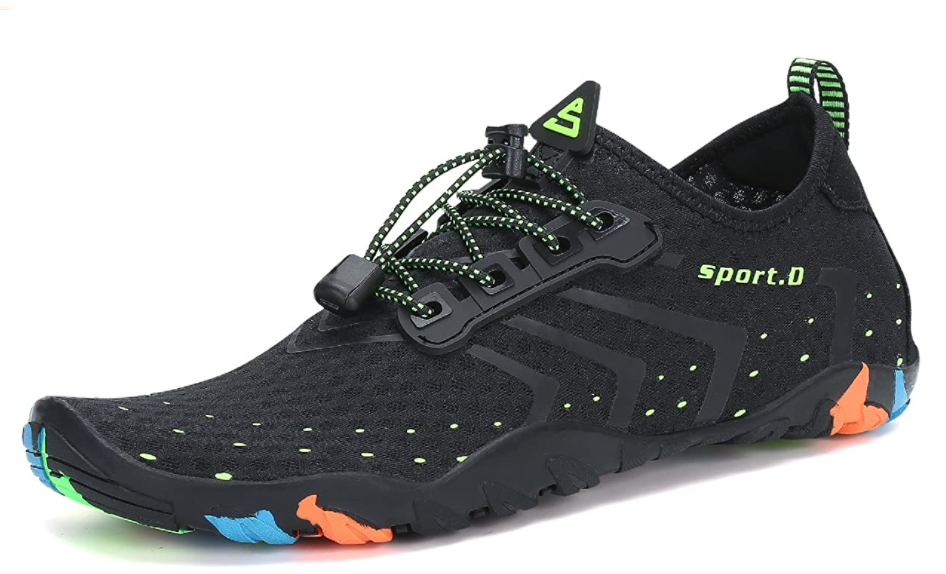
From our point of view, however, there are two specific occasions when you should wear footwear with SUP:
- Cold water: Even the best stand up paddler gets wet feet. So, if you are also paddling in colder water, it is worth wearing neoprene shoes.
- Sharp objects in the water: Depending on the area where you are travelling, wearing shoes makes sense in order to avoid standing or stepping on pointed stones, branches, or shells and possibly injuring the sole of your foot.
Usually, all shoes suitable for stand up paddling should be able to get wet, so you can still swim in them or do not immediately lose them when swimming. Typical swim shoes are, therefore, a great choice for SUP.
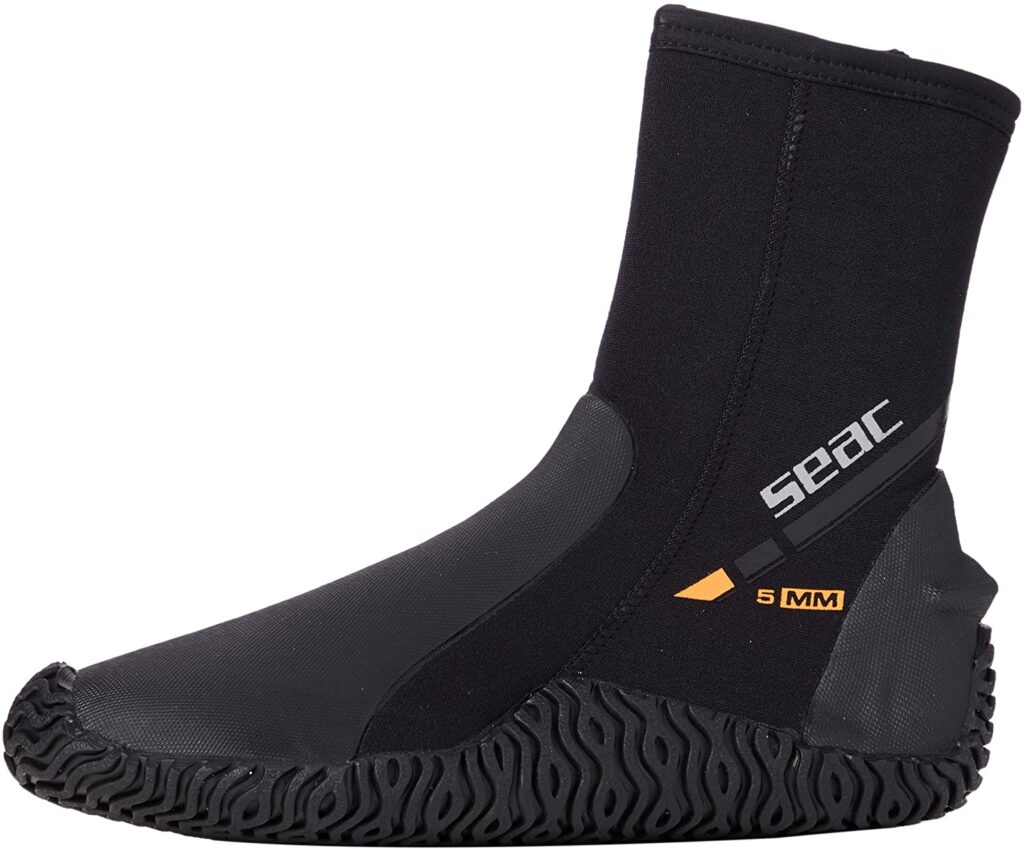
If you still need some protection against cold, neoprene shoes are certainly the best choice.
Bonus – Tip:
Neoprene shoes are also available in different thicknesses. The more protection you need from the cold, the thicker the material you should choose. If you are only looking for protection from stones or sharp objects in the water, you can also opt for very light swimming shoes.
Life Jacket: Safety First!
Remember that depending on the jurisdiction, there are specific rules that define who and when it is mandatory to wear a Life Jacket.
We don’t go into detail here about life jackets, the different types of life jackets and all the different laws out there. More information about Life Jackets and Personal Floating Devices for paddle boarding can be found here.
We want to encourage you to think about security… In addition, For children, a life jacket is simply mandatory when doing SUP!
Spare clothes in a dry bag for breaks is important
Especially when doing longer tours, you should always assume that the weather can change or the tour can go on a little longer. We therefore recommend that you always take spare clothes and warmer clothing or a rain covering, depending on the season, in your dry bag.
However, the dry bag has additional advantages:
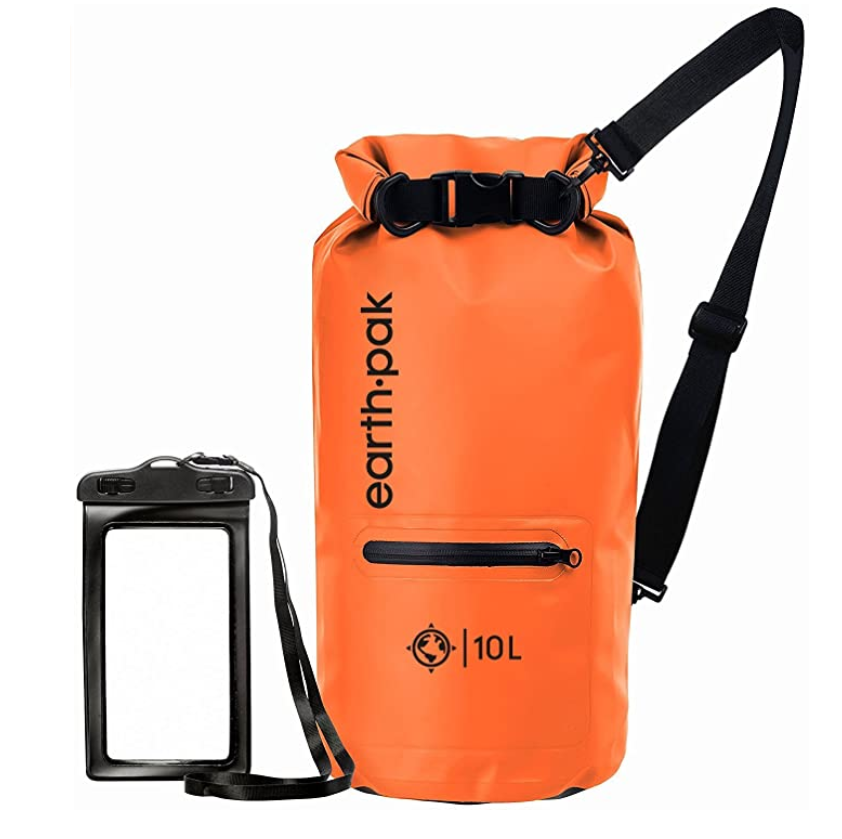
You can also carry your valuables, such as money or mobile phone, in it without them being damaged if you fall into the water. This is especially useful if you don’t have any other way to keep them safe when you’re paddling. It also makes sense for security reasons for you to take your mobile phone with you when you are on the road.
Dry bags are available in various designs and sizes (i.e. capacities). If you have a SUP board with a luggage rack, you can also use standard trekking dry bags. Personally, however, we prefer the versions that can also be worn comfortably as a backpack or dry bags, which come with an additional mounting option on the board.
You should choose the size according to your specific needs, similar to an everyday trekking backpack. If you do day trips, taking water, provisions, and spare clothes with you, you should consider about 20l in capacity. For short tours, when you are only taking valuables, some water, And a replacement T-shirt, 5l is enough. And if you only want to take your mobile phone and a credit card with you, there are also suitable waterproof cases.
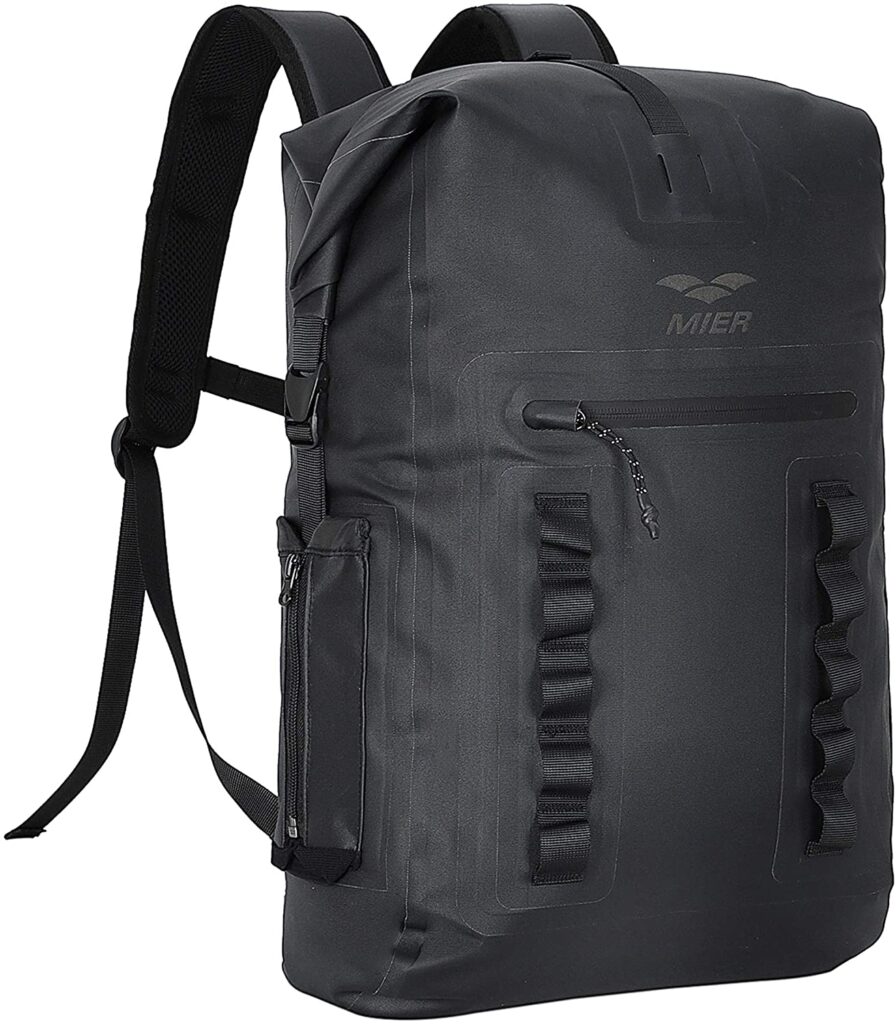
Summary: When do you need which type of equipment and SUP clothing?
As we have tried to explain in this article, a lot depends on the conditions and scope you choose for stand up paddling. For easier orientation, we have tried to summarize everything accordingly.
SUP clothing in summer: Sun and Fun
In summer, when water and air are nice and warm, you need:
- Swimming trunks, bikinis or swimsuits
- Sun cream or UV or lycra shirt
- Sun protection hat and sunglasses
- Life jacket
- Changes of clothing in the dry bag
If you make special excursions, such as whitewater tours, in cold waters, you should also wear the following:
- Wetsuit
- Neoprene shoes
- SUP Helmet
SUP in spring and autumn: Warm at the top and cold at the bottom or vice versa?
If you are travelling in spring and autumn, you should certainly study the weather and water reports before paddling. However, we recommend that you wear or take the following equipment with you from temperatures below 20°C/68F°:
- Wetsuit
- Sun protection hat
- Neoprene shoes (especially if the water is well below 20°C/68F°):
- Life jacket
- Changes of clothing (exceptionally long trousers, sweater/sweatshirt, windbreaker or rain jacket) in your dry bag
SUP clothing for the winter: Only the strong survive?
We have discussed briefly above that different clothes must be worn in winter than at other times of the year. In general, the colder the water becomes, the more important safety becomes. This means that you have to dress appropriately because you definitely should not fool around with cold water!
So if you are travelling in winter, you should certainly rely on an excellent dry suit. For clothing under the dry suit, we prefer long, warm, functional clothing. For example, long-sleeved Merino shirts, ski underwear, as well as high-quality and soft fleece jackets, sweaters, or thermal clothing are suitable for this.
In summary, for SUP in winter, you need the following:
- Dry suit
- Functional underwear for the body and legs
- Fleece jackets or sweaters
- Neoprene shoes
- Hat (head covering)
- Change of clothes in the dry bag
The final verdict about paddle board clothing
In conclusion, SUP clothing must always be suitable for individual weather and water conditions.
Yes, you can do stand up paddling all year round, and hey, it’s even fun. In contrast to summer, however, you need additional equipment, especially in winter.
This means:
If you want to do stand up paddling in more than just the summer, we recommend you buy at least one wetsuit and pair of neoprene shoes.
Additionally, if not already included in your Stand Up Paddle Set, a good dry bag is a sensible and useful purchase. In particular, this will keep your spare clothes, mobile phone, and wallet dry, even if you go swimming…
If this is the case, nothing can stand in the way of extensive stand up paddling! We wish you a lot of fun in the water!
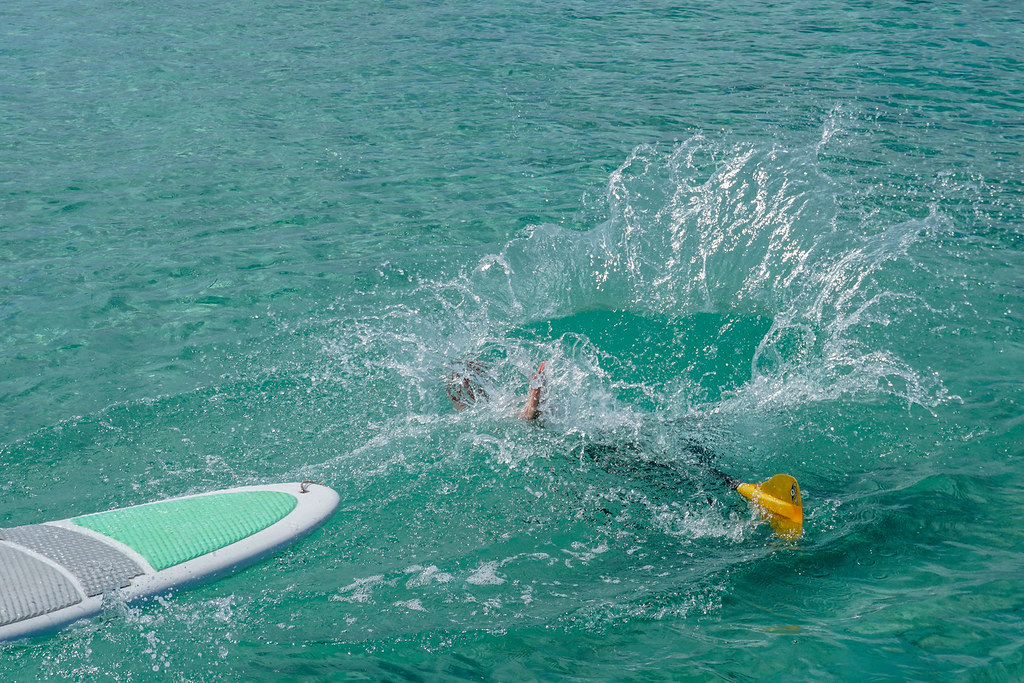
New to stand up paddle boarding? Learn everything you really need to know!
If you are new to Stand Up Paddle Boarding, it might well be that you have a lot of questions. Check out our page! You’ll find answers to almost all important questions like:
- how to learn Stand Up Paddle Boarding
- everything you need to know about SUP Boards
- which equipment you really need for Stand Up Paddle Boarding
…and much more!

